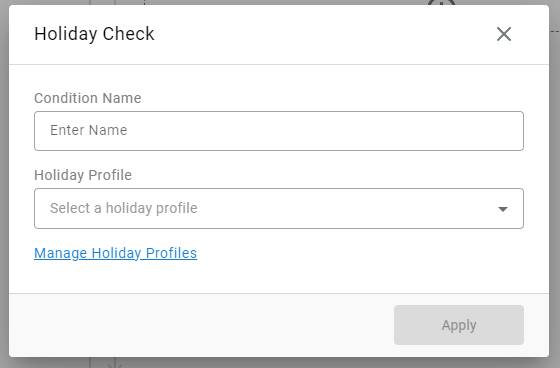Holiday Condition
Holiday is a conditional step that can be added to any IVR. The purpose is to use a predefined list of holidays or other days that your company or specific departments will be closed for a full or partial day. This condition and subsequent actions will determine how an inbound call to that IVR should be handled when received on one of these days.
Building a New Holiday Profile
Before adding a holiday profile to an IVR condition, it needs to first exist. If you have not built the applicable holiday profile yet, please review this article to learn how to build and manage the profiles.
Adding a Holiday Condition to an IVR
-
While configuring a new IVR Call Flow (or editing an existing one), select the "+" box to add a new condition/action

-
Select "Holiday" from the dropdown list
-
In the "Holiday Check" menu, fill out all fields

- Condition Name - What will this conditional step be displayed as in the flow and in historical reporting. As an example, you may call it "Check Company Holidays"
- Holiday Profile - Select which Holiday profile should be utilized from the existing list of all profiles.
- Manage Holiday Profile - If you need to build a new profile or edit an existing profile, you may select this text to enter the profile management menu as outlined in the section above
-
Select Apply when done.
Assigning Sub-Actions to the Holiday Condition
Once a holiday condition has been added to an IVR flow, you may first decide where you'd like the condition in the order of existing steps. Best practice would be near the top.
Next, as you hover over the bottom of the Holiday condition box, you'll see a slightly shorter "+" box appear beneath the condition. Here is where you'd assign sub-actions that should take place when the condition is met.

Updated 2 months ago
